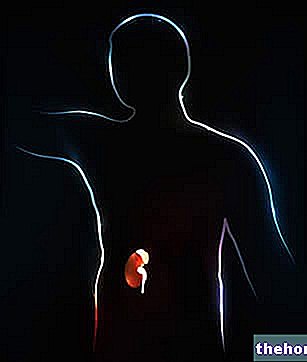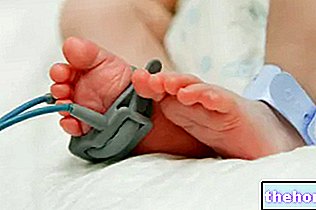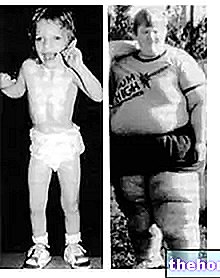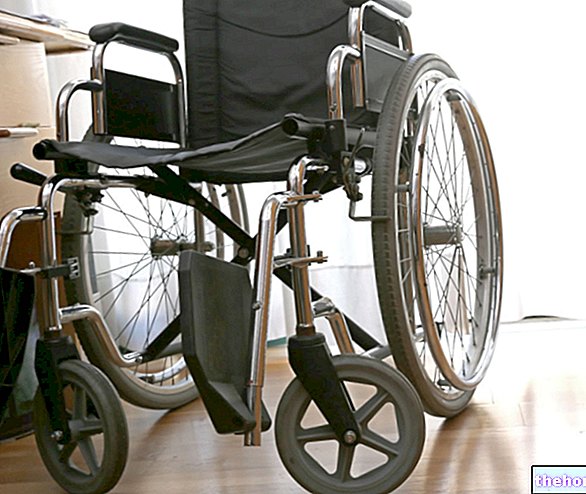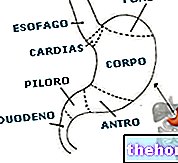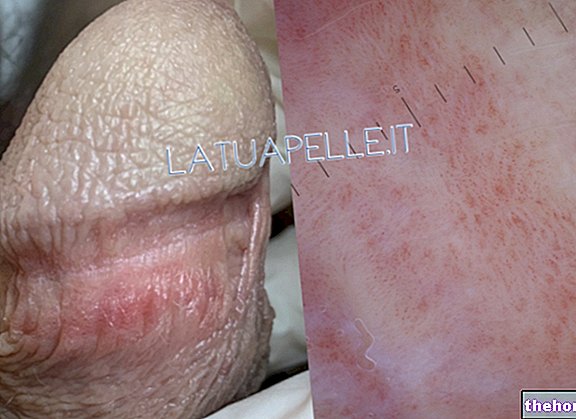Generality
Phocomelia is a very rare congenital disease, which induces the appearance of anatomical anomalies at the level of: upper limbs, lower limbs, head, face, internal organs, etc.
It can be the result of a genetic mutation in chromosome 8, inherited from the parents (hereditary phocomelia), or the consequence of the improper intake by the mother during pregnancy of some drugs such as thalidomide or accutane (iatrogenic phocomelia ).

Doctors have the ability to diagnose phocomelia before birth, thanks to a simple prenatal ultrasound.
The treatments provided consist of therapeutic remedies aimed at improving the symptomatological picture and the quality of life; for example, the following are widespread: the application of prostheses, for the replication of the upper or lower limbs, and the use of orthopedic braces.
Review of genetics
Before proceeding with the description of phocomelia, it is useful to review some fundamental concepts of genetics.
What is DNA? It is the genetic patrimony, in which the somatic traits, the predispositions, the physical qualities, the character, etc. of a living organism are written. It is contained in all the cells of the body having a nucleus, as lies within this.
What are chromosomes? According to the definition, chromosomes are the structural units in which DNA is organized. Human cells contain, in their nucleus, 23 pairs of homologous chromosomes (22 of the autosomal non-sexual type and one pair of the sexual type); each pair is different from another, as it contains a specific gene sequence.
What are genes? They are short stretches, or sequences, of DNA with a fundamental biological meaning: from them, in fact, proteins, or biological molecules fundamental for life, derive. In the genes, there is "written" part of who we are and who we will become.
Each gene is present in two versions, the alleles: one allele is of maternal origin, therefore transmitted by the mother; the other allele is of paternal origin, therefore transmitted by the father.
What is a genetic mutation? It is a mistake within the DNA sequence, which forms a gene. Because of this error, the resulting protein is either defective or completely absent. In both cases, the effects can be deleterious both for the life of the cell, in which the mutation occurs, and for that of the organism as a whole. Congenital diseases and neoplasms (ie tumors) belong to one or more genetic mutations.
What is phocomelia?
Phocomelia is a very rare congenital disease, which causes more or less severe anatomical deformations in the limbs, head or internal organs.
Phocomelic individuals, in fact, are people who may have malformed arms and / or legs (if not completely absent), hands with fingers fused together, deformed ears and eyes, feet directly connected to the torso, underdeveloped lungs or absent etc.
In medicine, the term "congenital" referring to a pathology means that the latter is present from birth.
ORIGIN OF THE TERM
The term phocomelia was coined by a French biologist named Etienne Geoffroy Saint-Hilaire, in 1836.
Causes
Phocomelia can be the consequence of a genetic mutation of the DNA, transmitted from the parents to the sick individual, or of a "prenatal intake, by the mother of the affected subject, of drugs such as thalidomide (against morning sickness) and" accutane (isotretinoin, against acne).
In other words, phocomelia exists both as a hereditary disease and as an iatrogenic disease.
FOCOMELIA AS HEREDITARY DISEASE
Phocomelia in its hereditary form is an autosomal recessive genetic disease that arises as a result of mutations in specific gene sequences present on autosomal chromosome 8.
For an inexperienced reader of genetics, this definition may be completely incomprehensible, therefore it is good to clarify what autosomal recessive genetic diseases (or recessive inherited diseases) are.
These pathologies are expressed only when both alleles of the gene causing the disease are mutated - this is because the mutated allele is recessive on the healthy one - and only when both parents carry at least one mutated allele.
Summary of the meaning of the terms hereditary, autosomal and recessive
- Hereditary: means that the parents transmit the genetic alteration responsible for the disease to the offspring (ie the children).
- Autosomal: it means that the mutation responsible for the disease resides in a non-sex chromosome, therefore autosomal.
- Recessive: means that the disease causes symptoms and signs only when both alleles of the responsible gene are mutated. To simplify the concept, it is as if a single mutated allele did not have enough power to influence the healthy allele, which continues to perform its action normally.

Figure: General example of an autosomal recessive genetic disease (or inherited recessive disease). Individuals with only one mutated allele take the name of healthy carriers, as they possess a "genetic anomaly that they can pass on to their children but, at the same time, are asymptomatic (ie they do not present any disturbance).
In probabilistic terms, the union of two healthy carriers means that: 25% of the children are ill, another 25% are completely healthy and the remaining 50% are healthy carriers.
PHOCOMILIA AS IATROGENIC DISEASE
Phocomelia in its iatrogenic form is mainly associated with the mother's intake of thalidomide during pregnancy.
To put this drug on the market, without the need for any medical prescription, was a "German pharmaceutical company, in 1958. Initially, doctors recommended it as a sedative for the treatment of anxiety; later, as a medicine against morning sickness typical of pregnancy.
Since after its commercialization with this second purpose, in Germany (above all) and in all those countries that bought the license, there was a notable increase in the cases of phocomelia, so much so that it was quite easy to establish whose responsibilities were.
Just think that, according to the chronicles of the time, due to thalidomide between 5,000 and 7,000 individuals were born with phocomelia, 40% of whom did not survive the vicissitudes of childbirth or the first months / years of life. the same statistics from the period report that 50% of mothers of phocomelic babies had taken thalidomide in the first three months of pregnancy.
Immediately after the discovery of the harmful action of thalidomide against the fetus, starting from 1961, the health authorities of the various countries involved withdrew the aforementioned drug from the market.
In recent years, doctors and pharmacologists have revived the use of thalidomide as a medicine for the treatment of multiple myeloma.
EPIDEMIOLOGY
Doctors have not yet established the exact incidence of phocomelia in its hereditary form. Certainly, they consider it a very uncommon disease.
According to what emerges from various statistical researches, the prevalence in the male sex is comparable to that in the female sex, therefore men and women are affected approximately equally.
Symptoms and Complications
For further information: Phocomelia symptoms
Hereditary phocomelia can cause very varied symptoms. Generally, the most common clinical manifestations consist of:
- Deformations of the upper limbs. These are the most common anomalies in phocomelic patients. They range from arms that are too short or absent to the presence of hands with fused fingers together (syndactyly) or missing (oligodactyly).
There are also cases in which the arms are missing, but not the hands, therefore the patient presents the latter in correspondence with where the upper limbs should begin. - Deformations of the lower limbs. Some examples of such deformations are: feet with fused or missing toes, legs too short, lack of legs but not feet (the latter are attached to the pelvis) etc.
- Micrognathy. In pathological anatomy, this term indicates the insufficient development, congenital or acquired, of the mandible. The presence of micrognathy generally implies a strong reduction in the size of the chin and various language disorders.
- Cleft lip (or cleft lip) and / or cleft palate. The first condition consists of an "interruption at the level of the upper lip, while the second consists of a" interruption of the palate.
- Cryptorchidism (or undescended testis). It consists in the failure of one or both testicles to descend into the scrotum, a process that generally takes place after birth, exactly during the first year of life. Non-descending testicles are stationary abdominal or along the inguinal canal (between abdomen and scrotum).
- Microcephaly. It is the medical term for a reduced development of the skull.
- Ocular hypertelorism. With ocular hypertelorism, doctors indicate the presence of two eyes that are particularly distant from each other.
- Ocular sclera tending to blue-blue.
- Small and underdeveloped nose, with very thin nostrils.
- Deformed ears.
- Scattered presence of tufts of light blond hair.
- Presence of a hemangioma on the face. Hemangiomas are benign tumors of the endothelial cells, which usually line the blood vessels. Typically, they appear as a dense collection of capillaries, which form a superficial or deep lump.
- Impaired cognitive development.
- Intra-uterine development slowed.
- Slow child growth.
SIGNS AND SYMPTOMS OF THE MOST SERIOUS FORMS OF HEREDITARY PHOCOMELIA
The signs and symptoms that characterize the more severe forms of hereditary phocomelia are:
- The encephalocele. It consists in the release, through an anomalous opening on the skull, of meningeal / cerebral tissue. Doctors describe this malformation as a cerebral hernia.
At its origin there is the lack of welding of the skull. - Hydrocephalus. It is the medical term that indicates an abnormal increase in the cerebral spinal fluid, contained in the subarachnoid space and in the cerebral ventricles. The presence of hydrocephalus mainly causes headaches, epilepsy attacks, convulsions and vomiting.
- Hypospadias. It is a purely male condition, which consists in an incorrect positioning of the opening of the urethra. This, in fact, does not reside on the tip of the glans, but in a point along the ventral side of the penis.
- The bicornuate uterus. It is a malformation of the uterus, in the presence of which this fundamental female genital organ assumes the ideal shape of a heart and presents itself with two "horns".
- The short neck.
- Thrombocytopenia (or thrombocytopenia). It is the medical term for a low level of platelets (less than 150,000 units per mm3 of blood). Platelets are those corpuscular elements of the blood (the others are red blood cells and white blood cells), which are involved in the blood clotting process.
- The presence of opaque corneas, cataracts and / or defects in the eyelids
- The presence of renal malformations
- The presence of heart defects
SYMPTOMS FRAMEWORK OF IATROGENIC PHOCOMILIA
Iatrogenic phocomelia has a slightly different symptom picture from that of hereditary phocomelia.
The major difference is that the iatrogenic form generally does not result in shorter or completely absent limbs.
As for the other clinical manifestations, the following are particularly characteristic:
- The tendency to develop facial paralysis
- The anomalies and at the level of the ears and eyes; abnormalities resulting in hearing loss and vision loss, respectively
- Diseases of the gastrointestinal tract and the genitourinary tract.
- The lack or incomplete development of one or both lungs
- Defects of the digestive tract, heart and / or kidneys.
As observed at the time of commercialization of thalidomide, approximately 40% of individuals with iatrogenic phocomelia die shortly after delivery or early in life.
Diagnosis
Doctors can diagnose phocomelia already in the prenatal age, thanks to the images of a simple ultrasound examination (prenatal ultrasound).
If for any reason the prenatal ultrasound has given negative results despite the presence of the disease, the classic physical examination, to which all new unborn children are subjected to ascertain their health conditions, is sufficient to identify the condition.
If doubts remain or the doctor wishes to obtain an accurate description of the current condition, genetic tests are available, which examine the DNA in the smallest details and bring to light any anomalies. Among these genetic tests, there are also some that allow us to establish whether the phocomelia is of the hereditary type or of the iatrogenic type.
Treatment
Phocomelia is clearly an incurable disease, as the deformations and anatomical anomalies that characterize it are permanent.
Thanks to medical advances, however, the availability of orthopedic braces and prostheses is steadily increasing, enabling phocomelic patients to lead a higher quality life, compared to several decades ago.
Furthermore, for individuals with micrognathy, who have language disorders, there is the possibility of subjecting them to therapies for language and for the improvement of communication skills.
PROSTHESES
Today, there are prostheses that replicate the upper and lower limbs with really important results.
In addition, thanks to modern technology, medical engineers have created myoelectric prosthetic elements (myoelectric prostheses), which move using the energy provided by electric accumulators. Currently (October 2015), myoelectric prostheses are applicable only to the hand and arms; however, experts are studying new equipment for other parts of the body.
When to apply myoelectric prostheses?
The first myoelectric prostheses were implantable only in adults; the current ones, on the other hand, are also so in children, with enormous advantages for their scholastic growth and beyond.
Prognosis
Being an incurable disease, phocomelia can never have a positive prognosis. However, thanks to current remedies, there is the possibility of stemming, even with good results, the drawbacks of the various anatomical anomalies, improving the quality of the patients' existence.
Clearly, the extent of the improvement depends above all on how severe the symptoms induced by phocomelia are.

